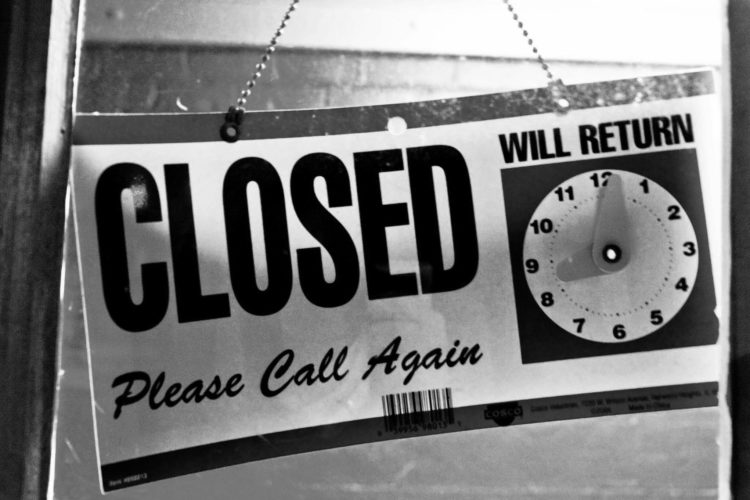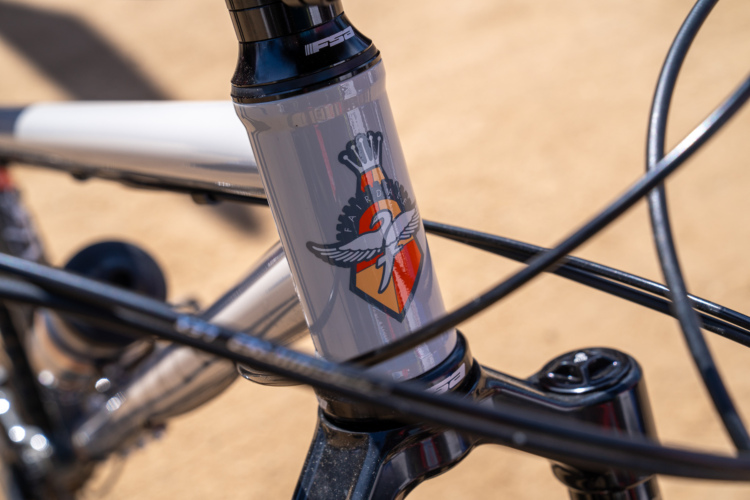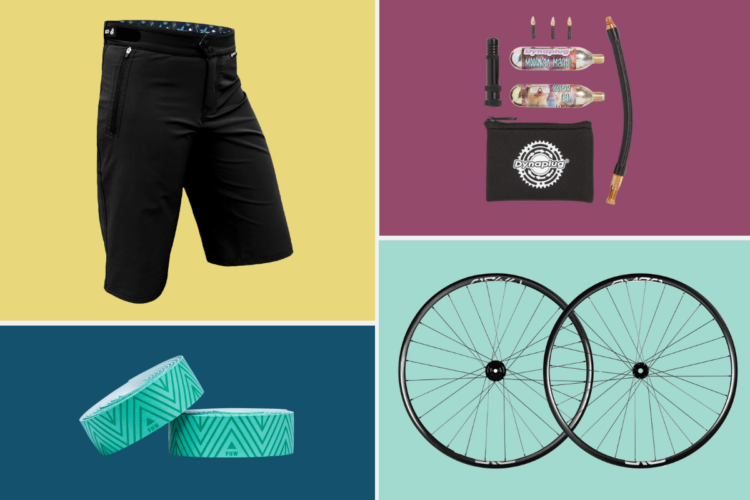Remember when a virus scared the crap out of every living human and forced us all indoors for a bit? Let’s hope the pandemic is a once-in-a-lifetime experience, and that its grip on our lives is nearing exhaustion. In the meantime, everyone in the bike industry is doing their damndest to keep us rolling down the trail.
Reduced travel expenses and increased boredom drove a lot of us to purchase stuff by the oodles over the past year or two, and the folks who make said stuff weren’t prepared for such a monumental increase. Factory closures and shipping constraints have bottlenecked business for bike companies that take advantage of low-cost skilled labor in places like Taiwan and China. A recent New York Times briefing warned that “Cheap and reliable shipping may no longer be taken as a given, forcing manufacturers to move production closer to customers. The crunch has companies across various industries warning of delays or effects to profits.” Of course, that also means we will be paying more for our trail toys.
With six models in their lineup, 20 employees in the US, and six in Europe, Evil Bikes is on the smaller side of carbon-frame companies. Evil’s Chief Executive Officer Jason Moeschler says the first and most important element of this supply chain “crisis” is to humanize it. We frame “crisis” with scare quotes here because the term seems a little dramatic compared to crises like hurricanes, famine, or global climate change, though that has become the common phrasing.
Each component on an Evil bike is made and managed by people, packed and shipped by humans, and finally quality-controlled at the Evil office in Bellingham, Washington before the bikes are assembled and boxed for sale. The people involved in that chain want to get products to consumers as quickly as possible while maintaining high quality standards. The factories and logistics companies also have new health standards to work with and are fighting to keep employees healthy and working. As we’ve learned, it’s nowhere near as simple as “hire more people and build another factory.”
The most energy-efficient and cost-effective way for bike brands to ship goods used to be consolidation. Moeschler says that before the current bike boom he could place orders with several different vendors — like purchasing cases of brakes from SRAM, droppers from BikeYoke, WTB saddles, and tires from Maxxis — and have those goods delivered in one shipping container to be floated over on a set day. That avenue of convenience has been replaced by sporadic component availability with gear that needs to be shipped out as soon as it’s ready. If Moeschler manages to combine two vendors on one shipment it’s entirely by luck, and most goods now have to be shipped with far more expensive air freight to free up factory space and get bikes built on time. Moeschler shared that shipping costs for a complete bike used to bounce between 40 to 65 dollars, and now that number is closer to $560.

Timing is another massive factor. If brands don’t ship orders quickly there are plenty of others who will scoop up the goods, so waiting on another order to combine the freight is largely impossible. Back in 2019, Evil could negotiate an ocean shipment from their factory or one of the components vendors they work with and expect to see the goods arrive at the nearest port in Tacoma, Washington, within a 22- to 30-day window. Those boats first have to pass through a port in Los Angeles for customs checks. Air shipments were far faster, typically arriving in four days if they paid for the speedy metal bird. Their business logistics were predictable and reliable for the most part, and that’s since flipped on its head. In addition to waiting months for orders to be ready at the factory, and boats being booked out, it can take weeks for containers to be sorted and processed once they reach the US.
Moeschler says “we have an ocean shipment that’s going on three and a half months since it departed. So, we can’t ship anything by ocean anymore because our production has been so delayed, and with the added three and a half months in transit time for that poor person who’s been waiting for a bike for possibly six months — that’s just not acceptable. So we had to transition to all air shipping.”
But those snappy four-day air freight turnarounds have also lengthened, now up to roughly two weeks. Moeschler recalls, “remember at the start of the pandemic when you were seeing images on television of empty cities, and hearing reports of how in India you could look out and see the mountains that people had never seen in their lifetime? There was a general lack of pollution because nobody was moving. When you see the DHL or Fed Ex jets at the airport, those only account for a small percentage of the number of goods that are shipped by air. A lot of the goods shipped by air go into the belly of commercial passenger jets. So all of a sudden there were no plane bellies. So the price went through the roof.” Here again, we have a massive backlog of shipping and higher prices than before. Like boat shipments, the buying boom created long queues at both ends of the aero shipping system that extends lead times.
Factory shutdowns due to the virus also play a massive factor in the current supply chain sludge. Every time one of the factories is shut down for a month to flatten the curve of infections and hospitalizations it takes a long while to get things properly rolling again, meanwhile materials and orders pile up and have to be processed before things can be manufactured at full speed again. Boats are backed up all over the world, unable to deliver or receive their loads. Lead times at factories have grown exponentially, and some are now at a two-year wait from the point an order comes in to the day finished gear is shipped out. To ensure they have goods for the coming seasons, bike brands send far more purchase orders (POs) than they ever have. So much so that a lot of companies, Evil included, had to create new systems of dealing with purchasing at such a high volume.
“Before the pandemic, we would never have POs for more than four months out. Lead times were standard. All of a sudden, we’re placing orders into 2022 during 2020. If I didn’t order frames and parts, we’d be in trouble.”
All of those “panic orders” as Moeschler calls them put factories in a risky position. They had to decide if they truly needed to make all of the product they had POs for, or if consumer spending would slow and they would be left with heaps of goods to offload cheaply. Most brands have terms that allow them to cancel orders within a few months of shipment, so the factories would be the ones left holding the unwanted pile. Moeschler and other bike brand executives see the bind that the factory folks are in and they’re working to communicate as early and often as possible.
“The best thing that we can do as Evil Bikes is to be as communicative as possible with the vendors. We know we have POs placed for forever now. And we look at it [the product forecast] out 120 days.” If the brand sees a component shortage or issue in the 120-day window they can go to the vendor and let them know that it needs to be resolved, or they will have to find a replacement component. Moeschler says that there is no bargaining or favors between bike brands and vendors. It’s a seller’s market on all fronts. He also mentioned being super impressed with how factories have managed to scale and work through this challenge.

So why not bring production local? Won’t that fix all these lead-time issues? Let’s look at the Industry Nine wheels specced on most Evil bikes. The hubs and rims are made in the US; spokes and nipples are made in Belgium. For Evil’s Loophole wheels the valves come from China and the rim tape is sourced domestically.
“A US-sourced good doesn’t necessarily mean it’s going to deliver faster. We use I9 hubs, and I9 is selling more wheels and hubs than they ever have before. All of their customers are beating on their door, saying ‘when’s my stuff going to be ready.’ They’ve gotta do big things to rise to the demand.” Moeschler adds, “the lead time is really long. No better than an Asian-made pair of hubs. Because the bike boom is global.”
“So, the first thing they do is say ‘okay Evil, in 2022 how many wheels are you going to buy?’ Then they take that along with all of their other customer’s forecasts and they go ‘we need a new building, and new wheel building machines, and X-number of new employees.’ That stuff doesn’t happen overnight. They probably don’t have all that cash sitting on hand, so they’ve gotta go work with a bank or whoever to make a plan and get the money. The machinery has lead times. They may not be able to find a building nearby. So, there are there huge challenges that the vendors have to rise to and there are a lot of risks. Maybe the volume isn’t there and they did it all for nothing.” So, every vendor has to calculate what they want to do and consider the repercussions of not doing what the bike brands are asking for. Moeschler concludes, “business is scary. Business is a big guessing game.”
Moving forward, there will continue to be shortages and long waits with most bike brands, even as some components start to reappear online and in your local bike shop. While your LBS may be flush with SRAM parts, Evil’s order is at a different queue and they may have to wait for other components once those arrive. Not everyone is going to scale up and build more factories, as that takes a massive time and cash investment that isn’t guaranteed to pay off.
Moeschler says that if a customer wants a new bike right now there are two main ways to get one. First up, order it and wait. Secondly, folks who want a bike sooner will need to put some effort in. Calling around to all of the shops in the area and letting them know you’re looking is a good first step. Some of the pre-ordered bikes may not get picked up, or those customers may have decided to go with something else. Similar to the way Evil can cancel orders with vendors, your local bike shop can cancel a bike order, freeing it up for someone else to purchase.
One final effect of this consumption bubble is that brands have had to sink so much money into future orders that they’re not able to focus on cool new projects like they normally would. Evil would have community elements like dirt jumps and a showroom by now if their resources weren’t tied up in collecting components as quickly as they can. This may be affecting product launches at other companies now and into the future. Moeschler says that, with some exceptions, companies and their factories can only sustain roughly 20% growth per year, and he hopes most of the bike industry will scale appropriately with the rising popularity in trail toys.
He closed our interview by saying that the industry’s future remains uncertain, and the supply chain “crisis” will continue for the foreseeable future.
How have you been affected by the lack of components and lower gear availability? Please share your story with us in the comments section.




















